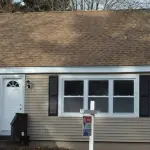According to the National Association of Realtors, single women accounted for nearly 20 percent of all home sales in 2017. That’s more than twice as many single men. Married couples were the only demographic to purchase more homes. NAR notes that the median age for single female homebuyers was 52, and one-third of all single female buyers did so for the first time.
Managing the Down Payment
Saving for the down payment is perhaps the most intimidating part of the home buying process. Depending on the type of loan and your credit, you may be expected to ante up as much as 20 percent of your home’s selling price plus closing costs, which can tack on another 5 percent. Homes in Nashua, New Hampshire, for example, typically sell for $266,000, meaning a potential down payment of $66,500, including closing costs. Thankfully, this is a worst-case scenario. Most buyers qualify for an FHA loan, which Credit.com explains requires a 3.5 percent down payment on loans up to $417,000. Interest rates may be slightly higher on an FHA loan than a conventional loan, but credit requirements tend to be more lenient. Research average costs in your area to get a better idea of your upfront investment.
When you’re working with a single income, putting aside the money you need to get the buying process rolling can be tough. However, there are a few ways to stockpile a small stash of cash. Start by having money transferred into a savings account before it hits your primary checking. You may also consider cutting out unnecessary expenses for 12 to 24 months before you start your house hunt. If you drop your cable bill and morning Starbucks routine, you could have an extra $5,000 at the end of two years. (Based on cable at $100/month and a $4.50 drink five days per week.) Branch Bank & Trust also suggests consolidating high-interest credit card balances to a lower interest card or paying off high-interest debt as soon as possible.
Cut Costs
Even at just 3.5 percent, the down payment can be hefty. There are many ways to cut costs on your mortgage to reduce your upright out-of-pocket investments. Your first and perhaps most important task is to shop around. CNN claims that even a half a percentage variance between interest rates from one lender to another can make a $9,000 difference over the course of your loan. You will also need to pay attention to your credit score. You’ll have access to the widest possible variety of mortgage products if you have a score higher than 720. An often overlooked factor to consider is the loan origination fee, which, like the interest rate, can vary from lender to lender. A loan origination fee is essentially a lender’s commission for creating the mortgage. Some lenders charge 1 percent of the loan price, but you may be able to find a local bank or credit union that has a fixed rate.
If you’re buying your second home after a divorce or spousal loss, you can use some of the money from the sale of your mutual home to fund your down payment. However you come up with the needed funds, don’t forget that you will also need money for furnishings, utility transfers, and moving expenses.
Finally, don’t overlook non-traditional homes. Condos, duplexes, and even retirement communities are excellent options for single ladies. These types of dwellings can lower your costs, eliminate some maintenance, and may even offer opportunities to meet new friends.
Buying a home can be intimidating, especially if you’re on your own. However, don’t let the process prevent you from getting the house of your dreams.
Contributed by Guest Blogger:
Brittany Fisher
http://financiallywell.info/





